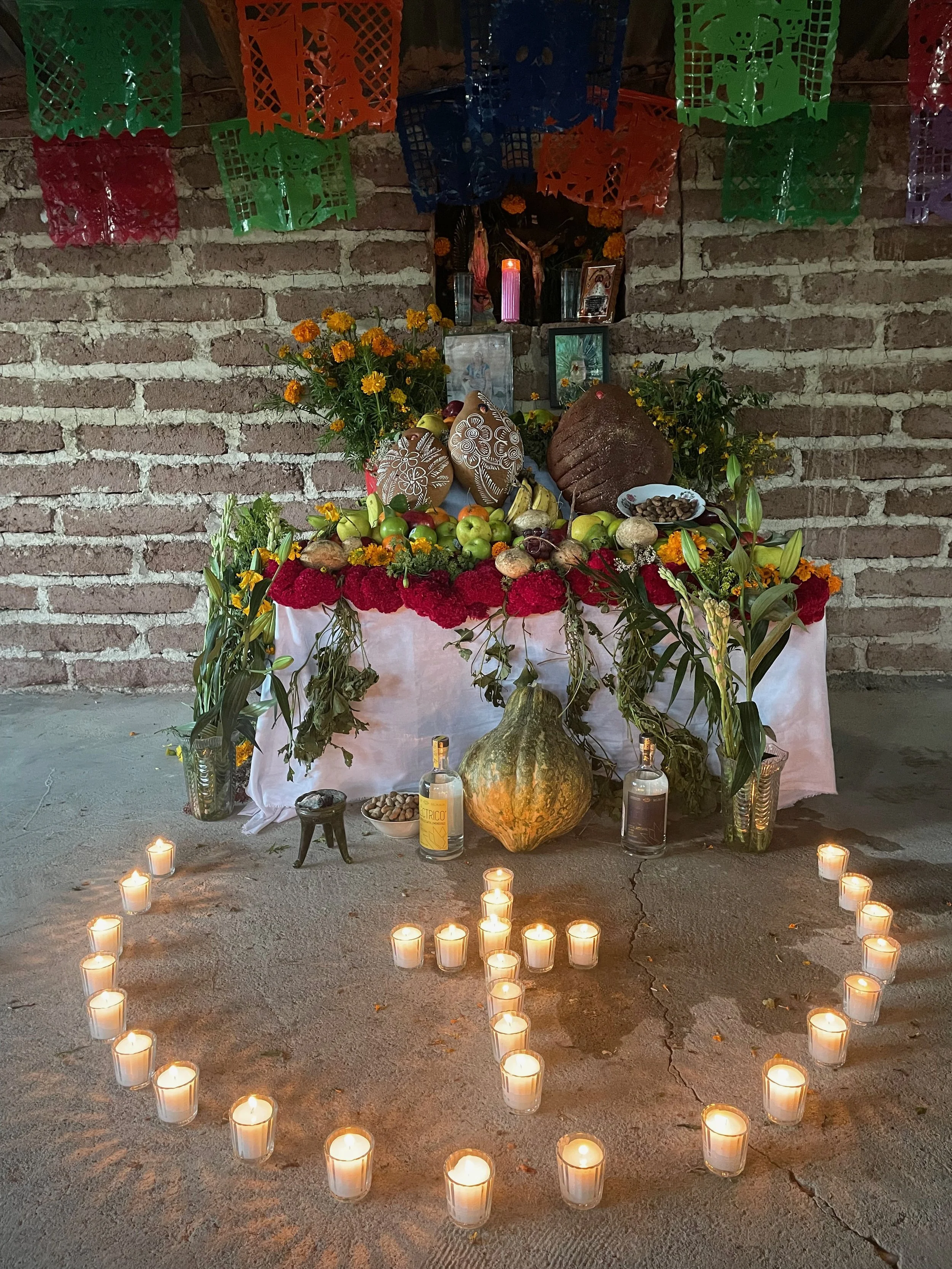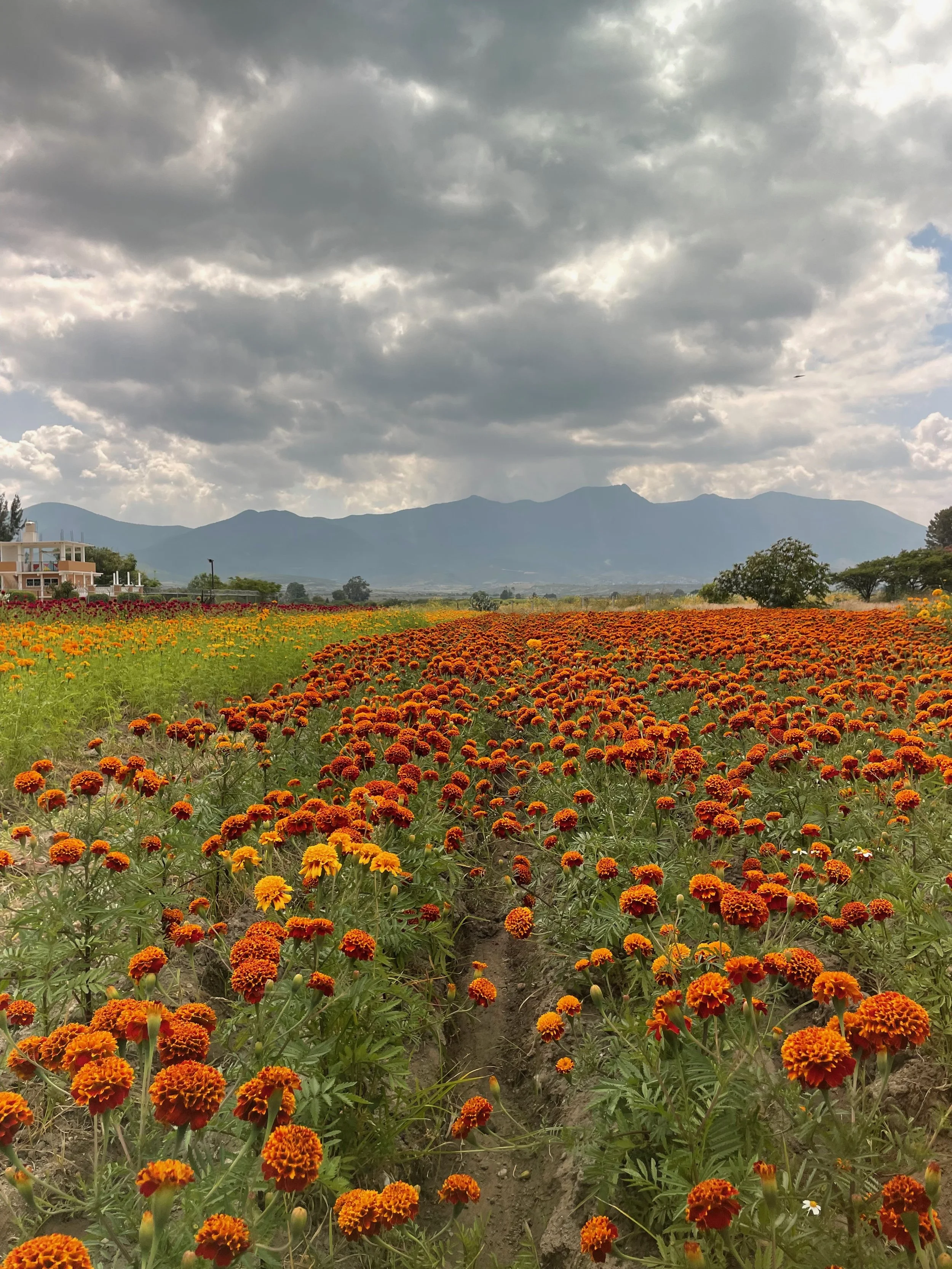Gold is the color… and blood red
Flor de Muertos, the Flower of the Dead, is what Oaxacans call the familiar marigold flowers that abound during October and November. They also call it the flower of life, and its proper local name is cempasúchil from the Nahuatl word, Cempohualxochitl, meaning flower of 20 petals.
After the rainy season, the hills and valleys are carpeted by different wild varieties of marigolds. They return with the sun and are seen as the golden representation of the sun on Earth. Like the sun, marigolds give life. They are used medicinally to treat respiratory diseases, digestive problems, and possibly even warts. They are also fed to chickens to make their skin and egg yolks golden and help color clothes and foods.
During the run-up to Dia de los Muertos, the Day of the Dead, the strip fields of agave, maize, beans, and vegetables in the great central valley of Oaxaca are upstaged by dazzling swatches of brilliant gold, bronze, and deep blood-red, perfect rectangles of different varieties of the brilliant indigenous flowers.
People pull up along the 190 highway between Oaxaca City and Mitla, the Zapotec city of the dead, and call the numbers left on cardboard signs by the fields. They negotiate with the absent growers based on personal or wholesale purchases, and the price diminishes as the first of November approaches.
Within a week, the flower fields are gone, but paths of the petals lead people to churches, flowers adorn altars in every home, café, and roadside, and graves are refreshed to show respect to Oaxacans gone before.


